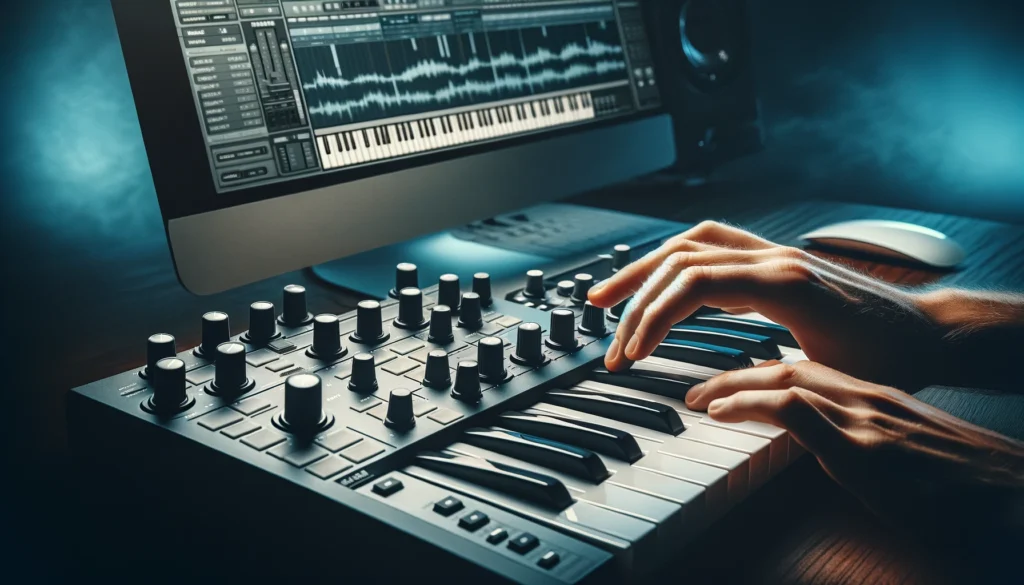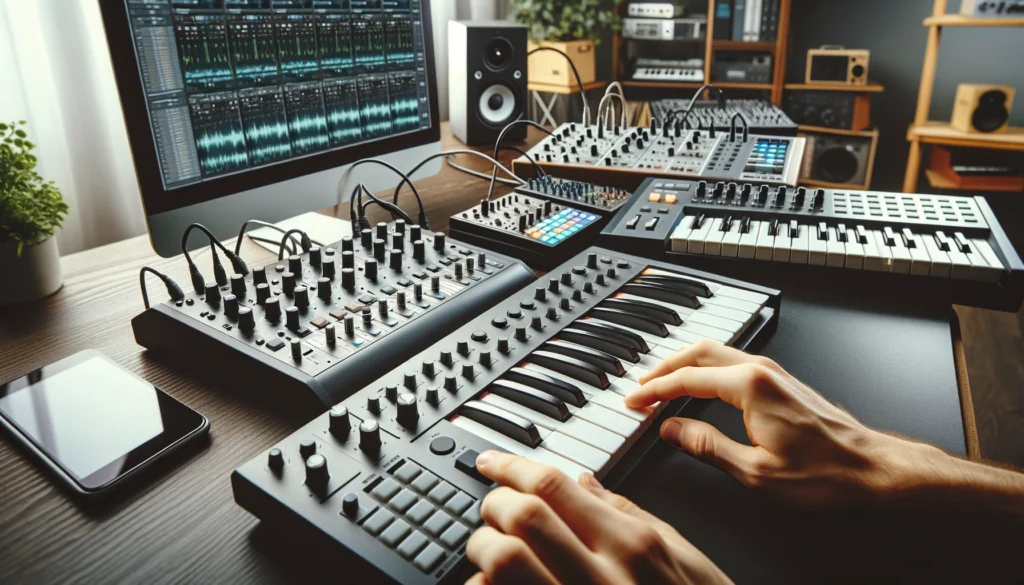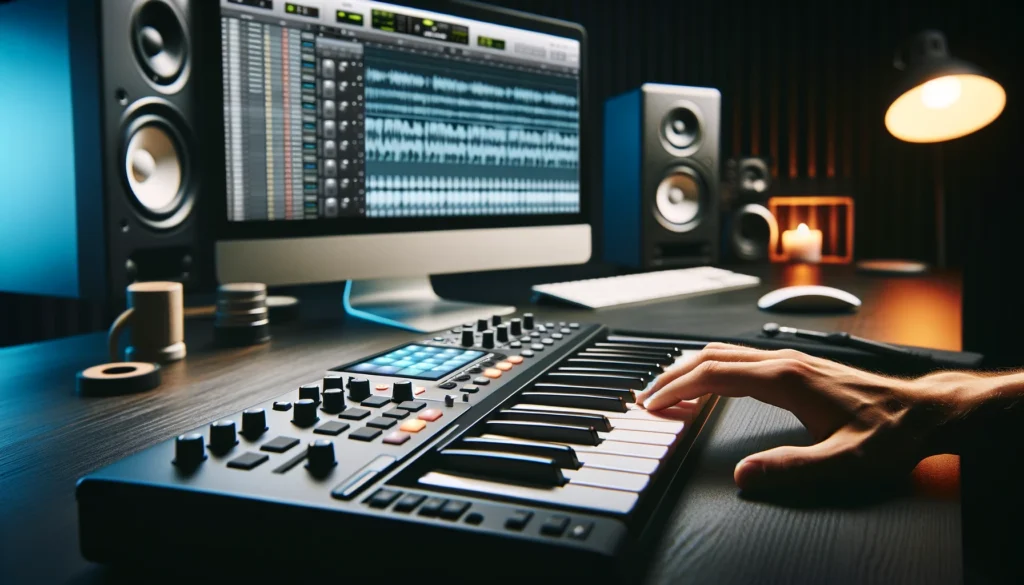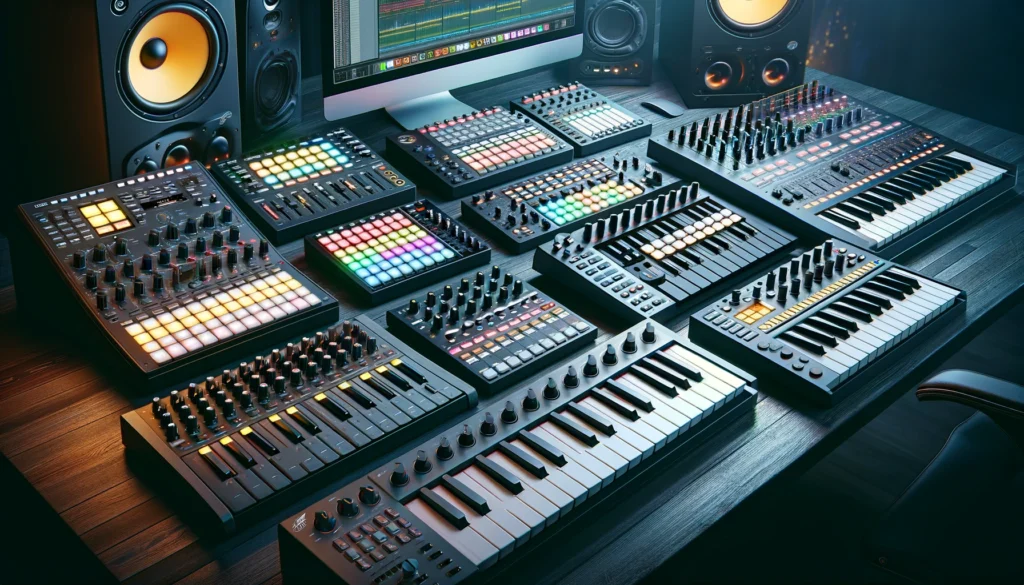Many DJs start their careers playing on MIDI controllers and wonder if they need a Digital Audio Workstation to unlock the full potential.
Understanding if you require DAW software is key to properly leveraging your MIDI keyboard, drum pads, or faders for music production.
Let’s dive into the details around integrating controllers and computers to generate professional songs and mixes.
Do You Need a DAW for a MIDI Controller?

Yes, you need a DAW (Digital Audio Workstation) software to unlock the full potential of a MIDI controller for music production.
Using a MIDI controller without a DAW allows you to control external hardware synthesizers.
But connecting the controller to a DAW like Ableton Live, Logic Pro, or FL Studio provides far more flexibility through virtual instrument and effect plugins.
We’ll explore the details around integrating MIDI controllers and DAWs further below.
But in short, software studios result in the greatest creative possibilities versus just using standalone MIDI gear.
What is a MIDI Controller?

A MIDI controller is a piece of hardware that is used to generate MIDI data signals.
Common types of MIDI controllers include keyboards, drum pads, faders, knobs, and many more.
MIDI controllers do not produce sound on their own.
They simply send MIDI data.
This data needs to be received by MIDI compatible hardware or software to generate audio.
There are many different kinds of MIDI controllers available.
Keyboard-style MIDI controllers resemble traditional piano keyboards.
They have keys for playing musical notes and extra controls like modulation and pitch wheels for altering sounds.
Pad controllers feature grids of velocity-sensitive drum pads for triggering samples and drum sounds.
Production control surfaces offer mixing tools like faders, knobs, transport controls, and more for controlling DAW software.
The distinguishing feature of all MIDI controllers is that they do not make sound themselves.
They only encode musical performance information into MIDI data that needs to be connected to other MIDI devices or software to hear audio.
Common connections for MIDI controllers include traditional 5-pin MIDI cables, USB cables for linking to computers, or wireless Bluetooth connectivity in some cases.
What is a DAW?

DAW stands for Digital Audio Workstation.
It is specialized software used for music production, recording, editing and mixing.
Common DAW options include Ableton Live, Logic Pro, Pro Tools, FL Studio, and more.
DAWs provide tools for arranging MIDI patterns and audio clips into full songs and compositions.
They host virtual instruments and effects plugins for synthesizing, processing, and manipulating sounds.
Modern DAWs also typically feature large libraries of loops, samples, and presets to speed up music creation.
Key functions of DAWs include sequencing MIDI data, recording/editing audio tracks, hosting virtual instrument and effect plugins, automation of parameters, and mixing capabilities.
Most DAWs provide similar core tools but differ in their workflows and specializations.
Audio engineers often develop proficiencies in specific DAWs based on personal preference and needs.
Using a MIDI Controller without a DAW
You can use a MIDI controller without a DAW if you have hardware synthesizers, drum machines or samplers.
The MIDI controller sends the performance data to the hardware to generate sound.
For example, connecting a MIDI keyboard controller to a polyphonic analog synthesizer allows you to play notes on the keyboard and hear them come out of the synth module using whatever sound is currently selected on the hardware synth.
This type of midi controller setup works well for controlling specific pieces of hardware in home or professional studios.
The advantages mainly relate to tactile control of external sound modules.
It feels more “hands on” playing keys and tweaking knobs that directly affect a hardware sound generator in real time.
The limitations have to do with flexibility – you can only work with the fixed sounds within the external MIDI compatible hardware devices you have on hand.
Wanting new sounds, polyphony, or effects means buying additional gear.
Using a MIDI Controller with a DAW
Connecting a MIDI controller to a DAW allows you to use virtual instruments and effects plugins to generate sound based on the MIDI performance data.
This provides far more flexibility versus just using external hardware synths.
With a DAW, the MIDI data from the controller can drive everything from realistic piano and drum sampler plugins to analog-modeling synth emulations and otherworldly ambient effect instruments.
The DAW captures the MIDI data from the keyboard, pads, faders, etc.
on the controller and routes it to software synthesizers and effects inside the box rather than having to manipulate cables on outside sound modules.
This unlocks infinite sonic possibilities constrained only by the quantity and quality of available plugins.
Features like automation recording also allow easy editing of any parameter tweaks made during a performance.
Working this way provides the most creative potential as well as being great for portability when traveling.
Which Approach is Best?

So do you really need a DAW to make the best use of a MIDI controller? The answer depends on a few factors related to your music production needs and preferences.
There are upsides and downsides to both approaches.
Working with hardware synths offers good hands-on control while the DAW and plugins route provides extremely flexible sound design options.
For most home studio producers today, using a MIDI controller with a powerful DAW unlocks the most creative potential.
The breadth of available sounds via virtual instrument and effect plugins is unmatched.
And features like drag-and-drop audio/MIDI arranging and automation handling make it far easier to edit and polish complete productions within a DAW project.
However, for those focused on developing keyboard skills or with access to high-end hardware synths, controlling external sound modules directly can still provide a uniquely tactile experience.
Additional Recommendations

Suggested DAW and MIDI Controller Pairings
The good news is most major DAWs work well with USB or MIDI interfaced controllers straight out of the box.
But some pairings are more optimized or popular than others:
– Ableton Live + Akai APC40/Push: Especially tight integration with clip launching controls.
– Logic Pro + Native Instruments keyboards: Apple’s DAW plays nice with NI stuff.
– Pro Tools + Avid Control Surfaces: Purpose-built for greater workflow.
– FL Studio + Novation Launchpad: Sync button triggering features.
You can use any controller with any DAW if you just want to play instruments and control transport.
But specialized controllers aligned with specific DAWs offer deeper software control.
Tips for Setting Up and Optimizing a MIDI Controller with a DAW
To get the most out of your MIDI keyboard, drum pad controller, or mixing surface, make sure you follow best practices when linking it with your DAW:
– Keep firmware and drivers updated: Newer versions mean better compatibility and reliability.
– Customize controls for your workflow: Assign frequently used functions to knobs/faders.
– Set gain staging properly: Don’t clip input signals and leave ample headphone volume range.
– Take time learning capabilities: Each has unique strengths so dive into manuals/tutorials.
– Consider ergonomics: Position gear to avoid hunching over or straining wrists.
Investing the effort to properly configure a MIDI controller with a compatible DAW results in the best possible music production experience and outcomes.
But don’t forget rest and posture too – avoid injuries from overenthusiastic jam sessions!
Conclusion
In summary, while MIDI keyboards, drum pads, and faders can directly control hardware synths, the flexibility of routing everything into a DAW unlocks vastly greater creative potential through access to virtual instruments, effects, and mixing capabilities.
Optimizing the integration between your controller(s) and software studio results in the best possible production experience.
